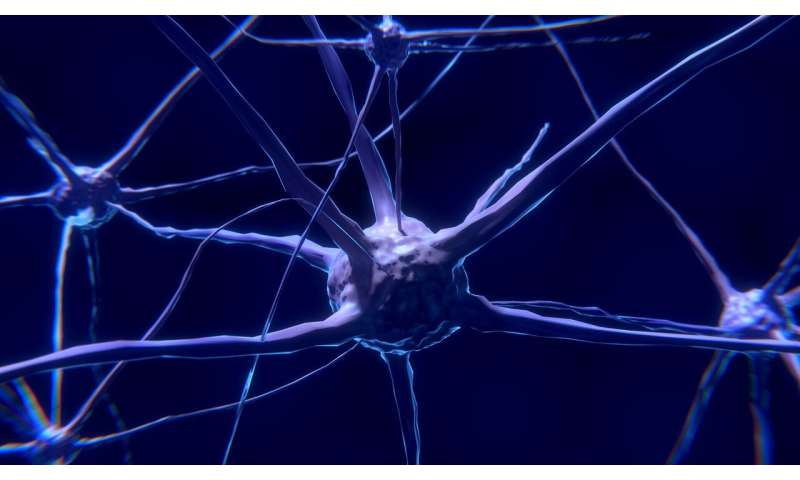Researchers discover novel potential target for drug addiction treatment

New University of Minnesota Medical School research discovers a novel potential target for treating drug addiction through “the hidden stars of the brain.”
Dopamine is one of the major reward molecules of the brain and contributes to learning, memory and motivated behaviors. Disruption of dopamine is associated with addiction-related disorders, such as amphetamine substance use and abuse.
A new study published in Neuron suggests that targeting astrocyte calcium signaling could decrease the behavioral effects of amphetamine. The study was co-led by Michelle Corkrum, Ph.D., a third-year medical student in the Medical Scientist Training Program (MD/Ph.D.) at the University of Minnesota Medical School, and Ana Covelo, Ph.D., in the lab of Alfonso Araque, Ph.D., and in collaboration with Mark Thomas, Ph.D.
Named for their star-shape, Corkrum describes astrocytes as “the hidden stars of the brain.” Astrocytes have traditionally been considered “support cells” of the brain and ignored in terms of actively contributing to brain function. This study shows that astrocytes do contribute to information processing and to how organisms think and function in this world.
Corkrum and colleagues found that astrocytes respond to dopamine with increases in calcium in the nucleus accumbens, one of the major reward centers in the brain. This increase in calcium was related to the release of ATP/adenosine to modulate neural activity in the nucleus accumbens. Then, they looked specifically at amphetamine because it is known to increase dopamine and psychomotor activity in organisms. They found that astrocytes respond to amphetamine with increases in calcium, and if astrocyte activity is ablated, the behavioral effect of amphetamine decreases in a mouse model.
“These findings suggest that astrocytes contribute to amphetamine signaling, dopamine signaling and overall reward signaling in the brain,” Corkrum said. “Because of this, astrocytes are a potentially novel cell type that can be specifically targeted to develop efficacious therapies for diseases with dysregulated dopamine.”
Corkrum attributes the success of this study to the collaborative nature of the University of Minnesota and throughout the graduate program in neuroscience. “We were able to integrate the phenomenal resources that the U of M offers to conduct state-of-the-art research and work with numerous different core facilities, which played key roles in this study,” Corkrum said.
Source: Read Full Article
